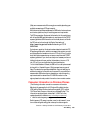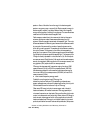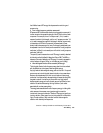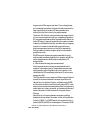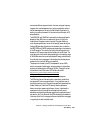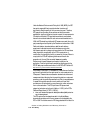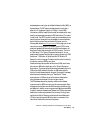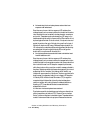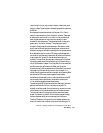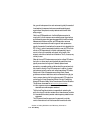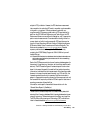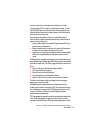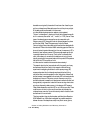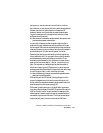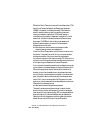Section 4: Safety Guidelines and Warranty Information
4A: Safety 113
need to be high in the air, they are often located on towers, poles, water
tanks, or rooftops. Typical heights for freestanding base station towers are
50-200 feet.
Some base stations use antennas that look like poles, 10 to 15 feet in
length, that are referred to as "omni-directional" antennas. These types
of antennas are usually found in rural areas. In urban and suburban
areas, wireless providers now more commonly use panel or sector
antennas for their base stations. These antennas consist of rectangular
panels, about 1 by 4 feet in dimension. The antennas are usually
arranged in three groups of three antennas each. One antenna in each
group is used to transmit signals to wireless phones, and the other two
antennas in each group are used to receive signals from wireless phones.
At any base station site, the amount of RF energy produced depends on
the number of radio channels (transmitters) per antenna and the power
of each transmitter. Typically, 21 channels per antenna sector are
available. For a typical cell site using sector antennas, each of the three
transmitting antennas could be connected to up to 21 transmitters for a
total of 63 transmitters. However, it is unlikely that all of the transmitters
would be transmitting at the same time. When omni-directional
antennas are used, a cellular base station could theoretically use up to 96
transmitters, but this would be very unusual, and, once again, it is
unlikely that all transmitters would be in operation simultaneously. Base
stations used for PCS communications generally require fewer
transmitters than those used for cellular radio transmissions, since PCS
carriers usually have a higher density of base station antenna sites.
11. Are wireless telephone base stations safe?
The electromagnetic RF signals transmitted from base station antennas
stations travel toward the horizon in relatively narrow paths. For
example, the radiation pattern for an antenna array mounted on a tower
can be likened to a thin pancake centered around the antenna system.
The individual pattern for a single array of sector antennas is wedge-
shaped, like a piece of pie. As with all forms of electromagnetic energy,
the power decreases rapidly as one moves away from the antenna.
Therefore, RF exposure on the ground is much less than exposure very
close to the antenna and in the path of the transmitted radio signal. In



